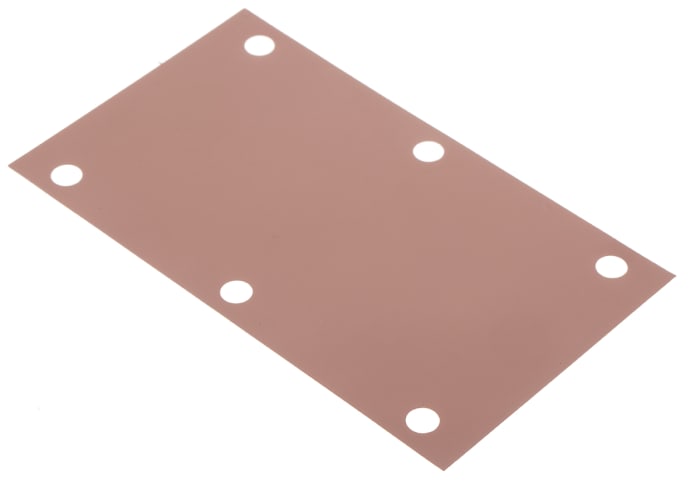Tekninen dokumentti
Tekniset tiedot
Merkki
RS ProDimensions
128 x 72.5mm
Thickness
0.127mm
Length
128mm
Width
72.5mm
Thermal Conductivity
2.5W/m·K
Self-Adhesive
No
Minimum Operating Temperature
-45°C
Maximum Operating Temperature
+125°C
Colour
Grey
Operating Temperature Range
-45 → +125 °C
Alkuperämaa
United Kingdom
Tuotetiedot
RS PRO Phase Change Interface Material
RS PRO phase change materials are ideal for thermal management applications. Available in this range are phase change interface materials in sheets, resistor pads and as a dispensable paste.
Phase change materials work because they change their state with changes in temperature between the heat source and the heatsink. During this process, the material stores thermal energy which is then released as the material cools. This means that the material can absorb thermal energy as the heat is generated which helps to keep the desired component cool. This improves contact between the surfaces, completely fillling air gaps and increasing heat transfer.
€ 105,00
€ 10,50 1 kpl (10 kpl/pakkaus) (ilman ALV)
€ 131,78
€ 13,178 1 kpl (10 kpl/pakkaus) (Sis ALV:n)
10
€ 105,00
€ 10,50 1 kpl (10 kpl/pakkaus) (ilman ALV)
€ 131,78
€ 13,178 1 kpl (10 kpl/pakkaus) (Sis ALV:n)
10
Varastotiedot eivät ole tilapäisesti saatavilla.
Tarkista myöhemmin uudelleen.
Tekninen dokumentti
Tekniset tiedot
Merkki
RS ProDimensions
128 x 72.5mm
Thickness
0.127mm
Length
128mm
Width
72.5mm
Thermal Conductivity
2.5W/m·K
Self-Adhesive
No
Minimum Operating Temperature
-45°C
Maximum Operating Temperature
+125°C
Colour
Grey
Operating Temperature Range
-45 → +125 °C
Alkuperämaa
United Kingdom
Tuotetiedot
RS PRO Phase Change Interface Material
RS PRO phase change materials are ideal for thermal management applications. Available in this range are phase change interface materials in sheets, resistor pads and as a dispensable paste.
Phase change materials work because they change their state with changes in temperature between the heat source and the heatsink. During this process, the material stores thermal energy which is then released as the material cools. This means that the material can absorb thermal energy as the heat is generated which helps to keep the desired component cool. This improves contact between the surfaces, completely fillling air gaps and increasing heat transfer.


